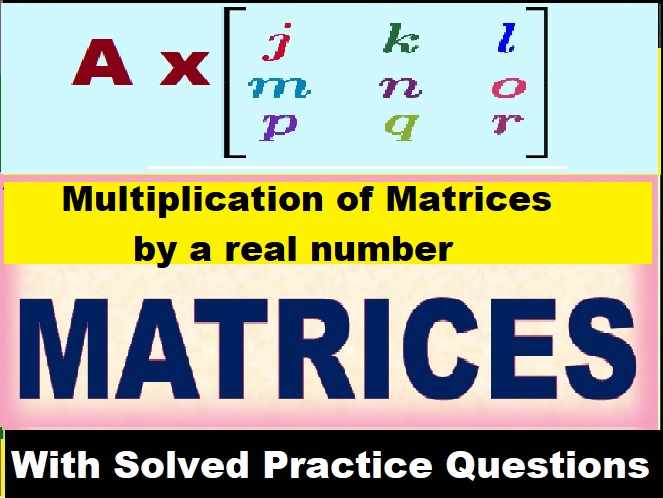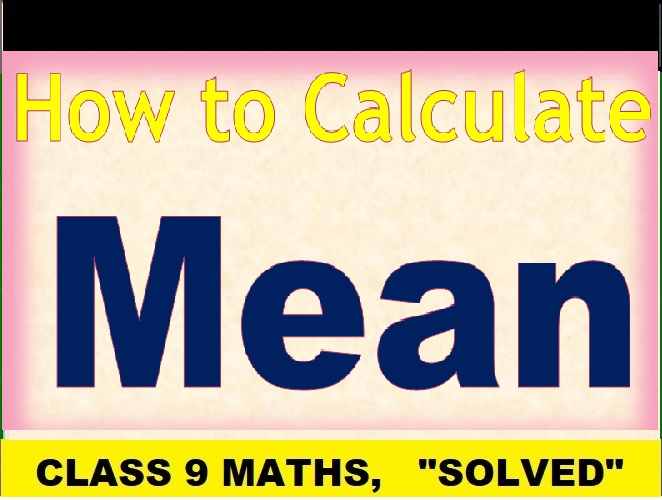Measurement of Density and Speed Class-7th Study Question Goyal Solutions . We Provide Step by Step Answers Study questions of Chapter-1,Physical Quantities and Measurement unit -3 (Measurement of Density and Speed ) Visit official Website CISCE for detail information about ICSE Board Class-7.
Measurement of Density and Speed Class-7th Goyal Brothers
Physics Solutions Ch-1 (unit-3)
| Board | ICSE |
| Class | 7th |
| Subject | Physics |
| Book Name | Goyal Brothers |
| Theme-1 | Physical Quantities and Measurement |
| Unit-3 | Measurement of Density and Speed |
| Topic | Solution of Study Questions with Numericals |
| Session | 2023-24 |
STUDY QUESTIONS
(Goyal Brothers Physics Solutions Chapter-1 Unit -3)
Question 1. You are provided with a piece of rock and common laboratory equipment. How will you proceed to find its density? Diagrams not required.
Answer: Density = mass / volume.
mass of the given rock piece is measured using physical balance.
Let us take a measuring jar and fill water in it partially.
By immersing the given rock piece in measuring jar using a piece of thread, we can measure the displaced volume of water.
This displaced volume is the volume of given piece of rock.
By knowing mass and volume, we can calculate its density
Question 2. Briefly describe how you will find experimentally the density of milk with a density bottle.
Answer: A density bottle is any bottle of known volume which can be weighed empty and then weighed containing the liquid whose density you wish to determine. Then density = mass/volume and you thus determine density
Question 3. How does the density of a gas change with the rise in its temperature?
Answer: There is a decrease in density of a gas when increase in the temperature because the intermolecular space between the gas molecules is increased as a result volume increases and density decreases.
Question 4. On the basis of change of density with the change in temperature, explain how do the liquids get heated up, when heated in a vessel.
Answer: According to the Thermal Properties Of Matter, when we heat a liquid in a beaker the liquid close to the bottom of beaker (closer to the source of heat) expands and hence its density decreases This lighter water (hot) rise up in the beaker allowing the heavy, dense cold water to take its place towards the base of the beaker causing convection current This current ultimately heats the entire liquid.
Question 5. How does the density of gases change with the rise in temperature?
Answer: When a liquid or gas is heated, the molecules move faster, bump into each other, and spread apart. Because the molecules are spread apart, they take up more space. They are less dense. The opposite occurs when a liquid or gas is cooled.
Question 6.
(a) Define density: The mass per unit volume of a substance is called density. Density = mass / volume
(b) State units of density briefly.
Answer: Density is the amount of mass in a unit volume of a substance, this means that in one unit volume of substance how much mass is present.
Common units for density include g/mL, g/cm3, g/L, kg/L, and even kg/m3.
Question 7. Describe conversion of the units of density in CGS system and SI system by giving an example.
Answer: he SI unit of kilogram per cubic metre (kg/m3) and the cgs unit of gram per cubic centimetre (g/cm3) are probably the most commonly used units for density. 1,000 kg/m3 equals 1 g/cm3. (The cubic centimeter can be alternately called a millilitre or a cc.) 10^-3 is the conversion factor between the two units
Question 8.
(a) What do you mean by speed?
Answer: Speed is defined as the rate of change of position of an object in any direction. Speed is measured as the ratio of distance to the time in which the distance was covered
(b) State units of speed briefly.
Answer: The most common speed units are meters per second m/s and kilometres per hour km/h.
Question 9. Describe uniform speed with an example.
Answer: When an object travels an equal amount of distance in an equal amount of time then it is moving with a uniform speed. For example, a truck moving on a highway covers equal distances in equal time intervals regardless of the direction of motion of the truck.
Question 10. Describe non-uniform speed with an example.
Answer: A body is said to have non-uniform motion if its velocity changes with time. Such a body is necessarily under the influence of an external force. An example of non-uniform motion is a body rotating at a constant speed. Its velocity is not constant because its direction of motion changes every instant.
Numerical Based Question
(Goyal Brothers Physics Solutions Chapter-1 Unit -3)
Question 11. The mass of a wooden block is 200 g and volume is 250 cm3 . Find the density of wooden block in
(a) gcm-3
(b) kgm-3
Answer:
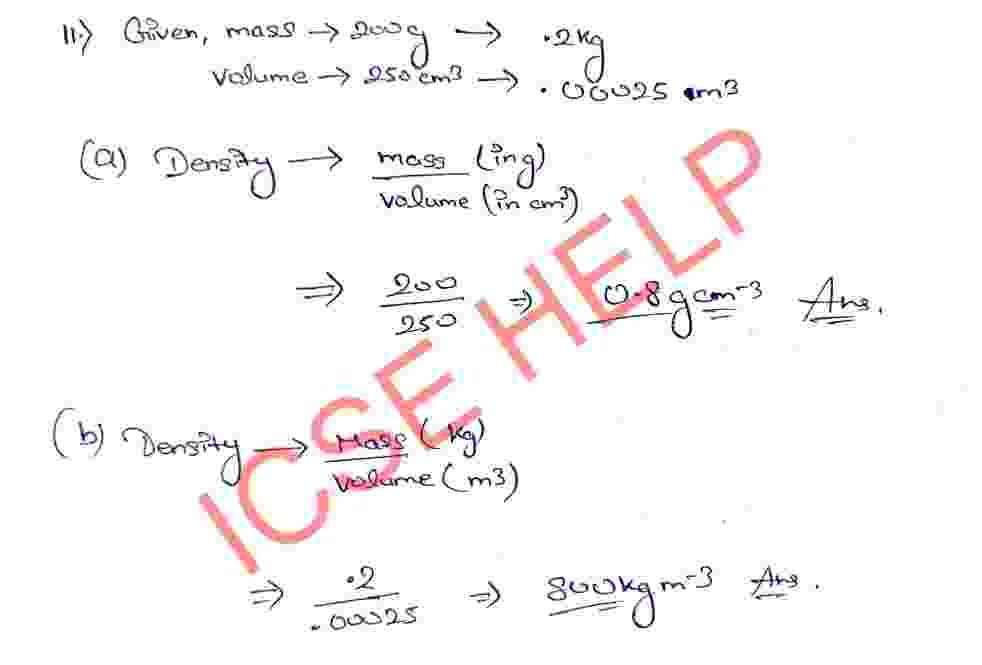
Question 12. The mass of 50 cm3 milk is 51.5 g. Find the density of milk in
(a) gcm-3
(b) kgm-3
Answer:
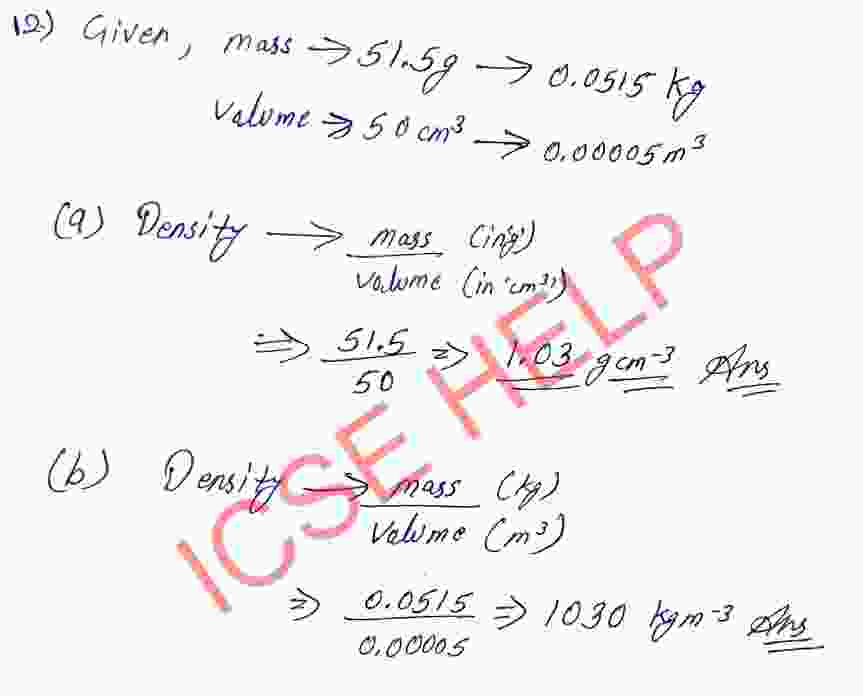
Question 13. A piece of lead has a volume of 50 cm3 and density 11.5 gcm-3. Find the mass of the piece of lead?
Answer:

Question 14. The density of mercury is 13.6 gcm-3. Find the mass of 25 cm3 of the mercury.
Answer:
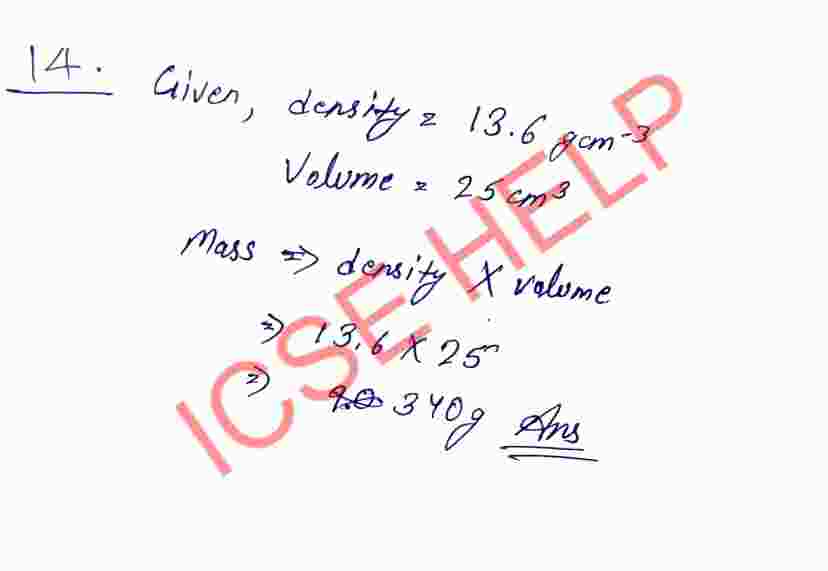
Question 15. The mass of an ice block is 125 g. If density of ice is 0.92 gcm-3 , find the volume of ice block.
Answer:
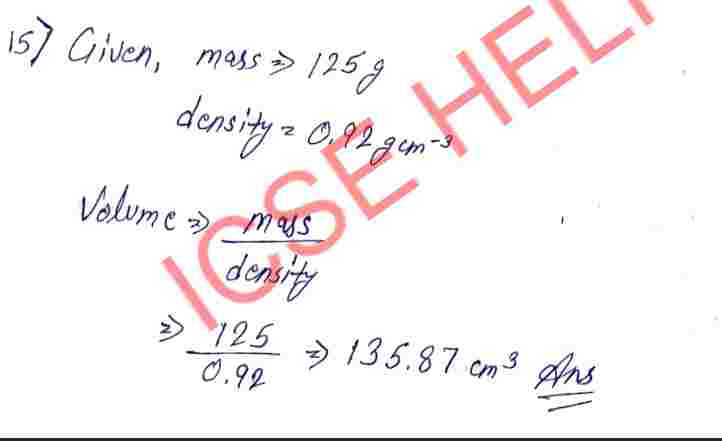
Question 16. A silver block has mass 200 g and its density is 10.3 gcm-3. Find the volume of the silver block.
Answer:

Question 17. A horse runs a distance of 1200 m in 3 min and 20 s. What is the speed of horse?
Answer:

Question 18. A car is moving at a speed of 15 ms-1. In how much time it will cover a distance of 1.2 km?
Answer:

Question 19. A bus is moving at 20 ms-1. How much distance in kilometers will the bus cover in 25 minutes?
Answer:
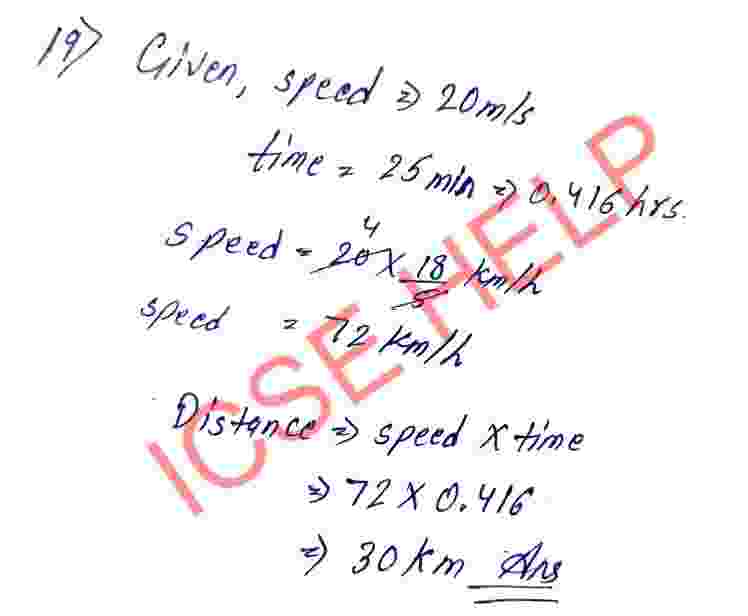
Question 20. A car travels 20 km in 20 minutes. Find the speed of car (a) kmh-1(b)ms-1 ?
Answer:
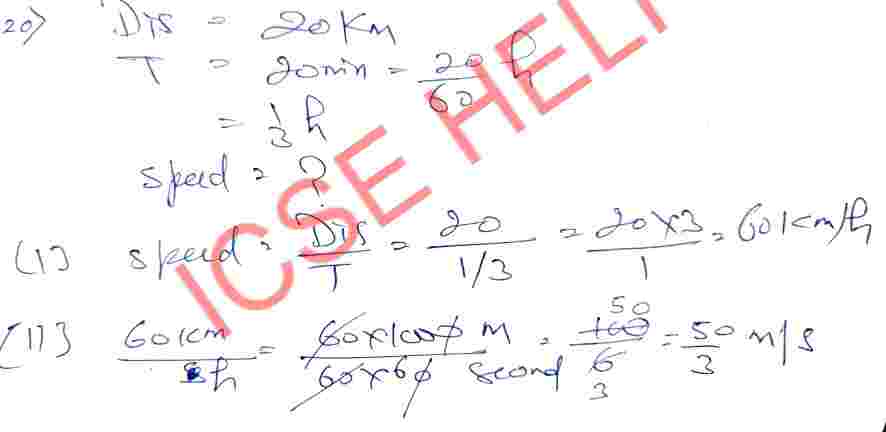
Question 21. How long will a train take to travel a distance of 250 km with a speed of 80 kmh-1?
Answer:
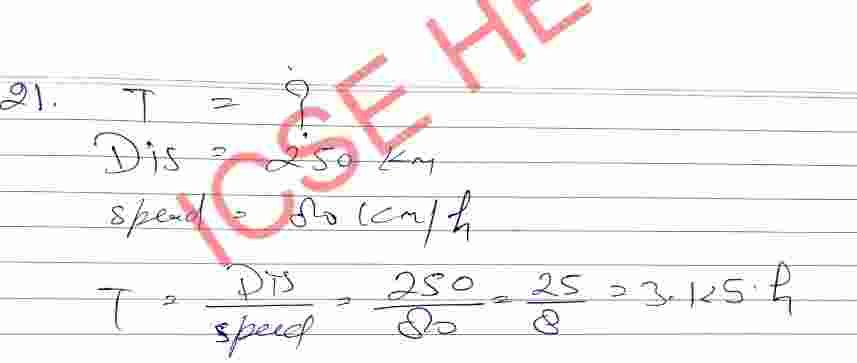
Question 22. A girl travels with a speed of 8 ms-1 for 15 minutes. How much distance dies she travel?
Answer:
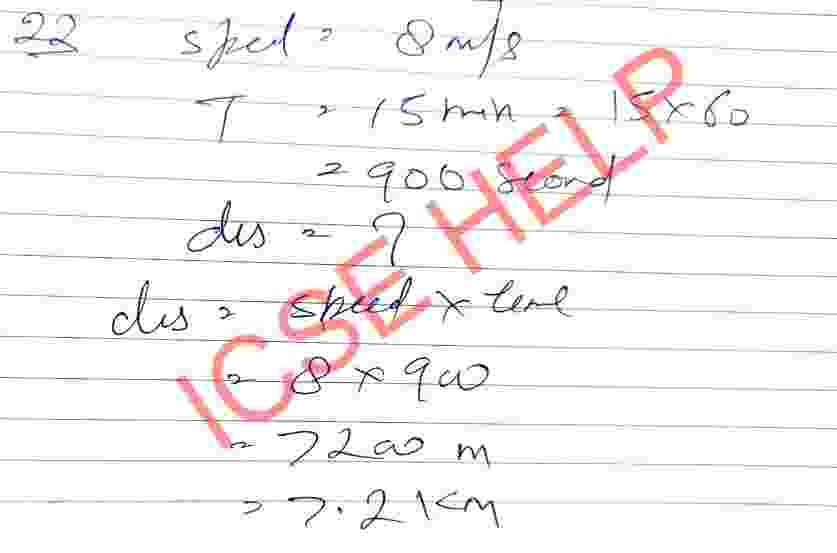
PDF Solution of Numericals
— : end of Measurement of Density and Speed Class-7th Goyal Brothers :–-
Return to- ICSE Class -7 Goyal Brothers Physics Solutions
Thanks
Please share with your friends if you find it useful
